site search
online catalog
BEAUTIFUL PRESENTATION 1850 STAFF AND FIELD SWORD OF LT. CHARLES E. TUCKER 71st PA - BAKER’S CALIFORNIA REGIMENT- WOUNDED AT ANTIETAM

Hover to zoom

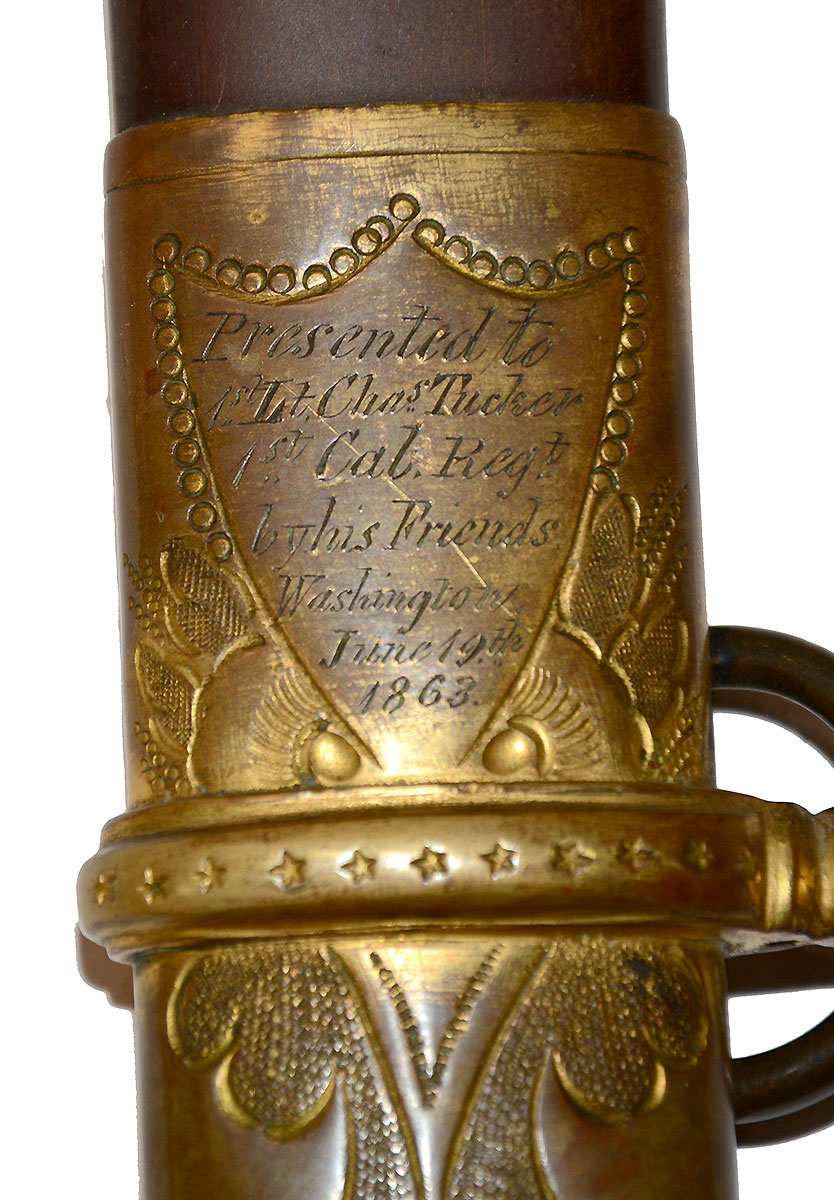
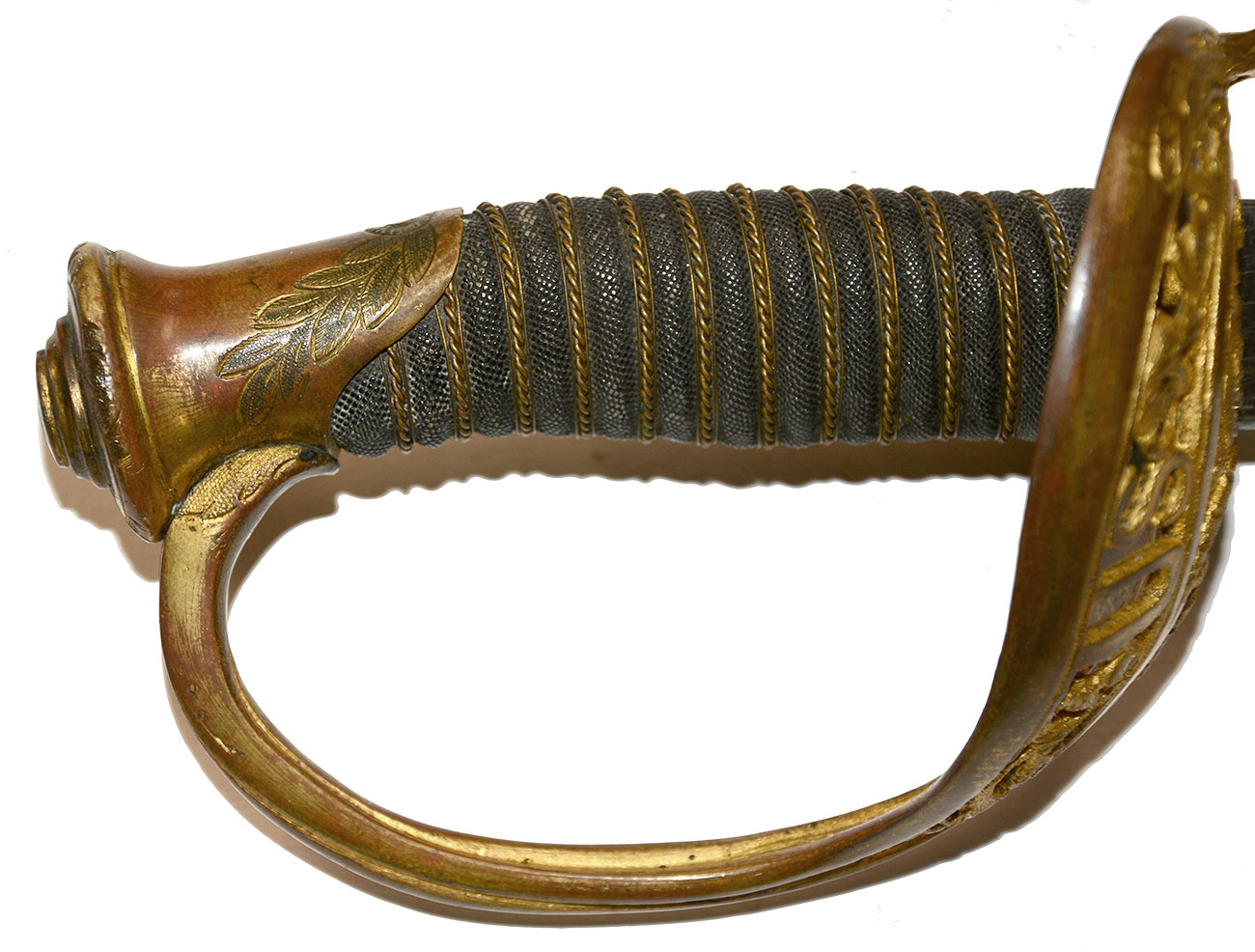
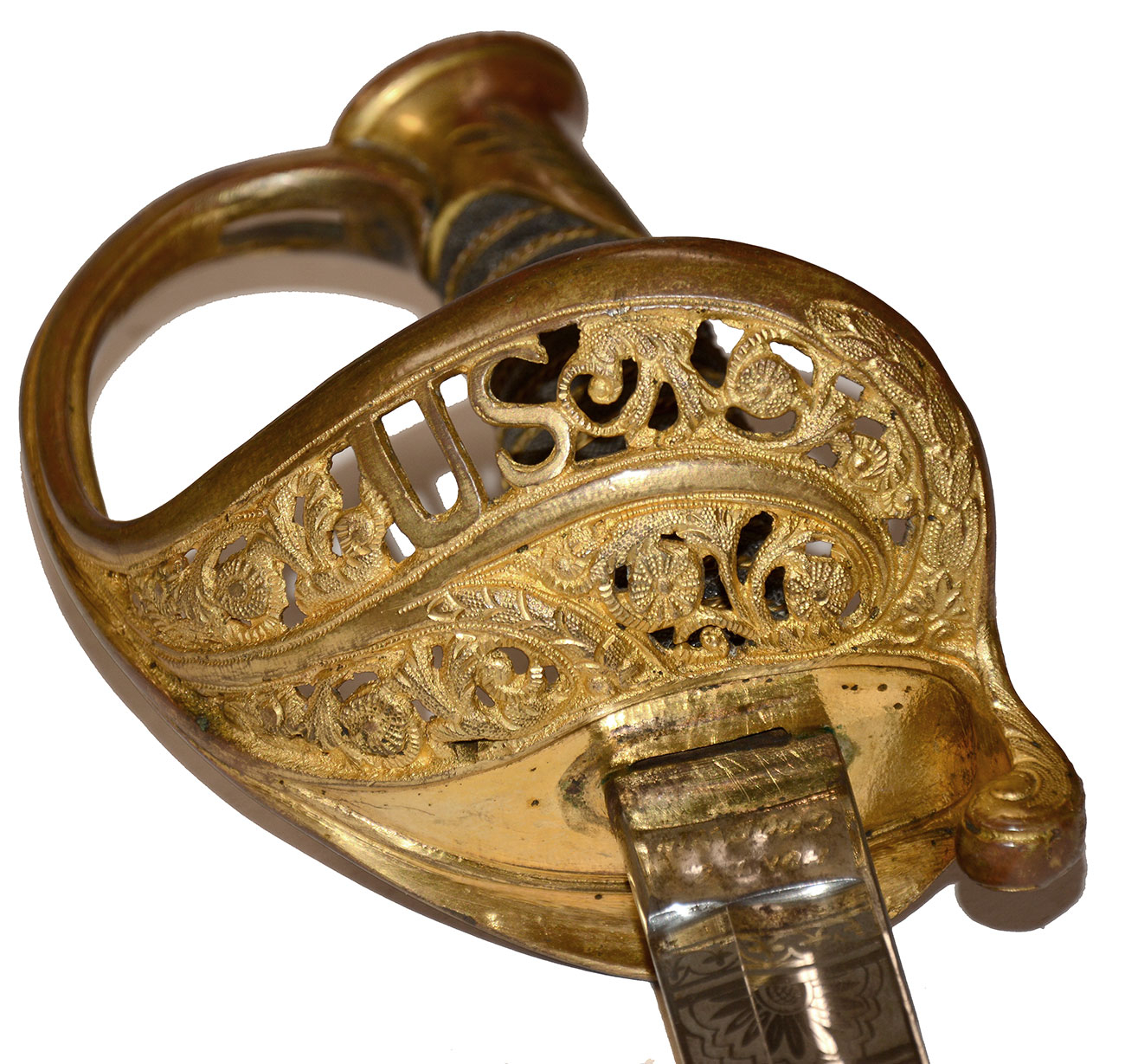
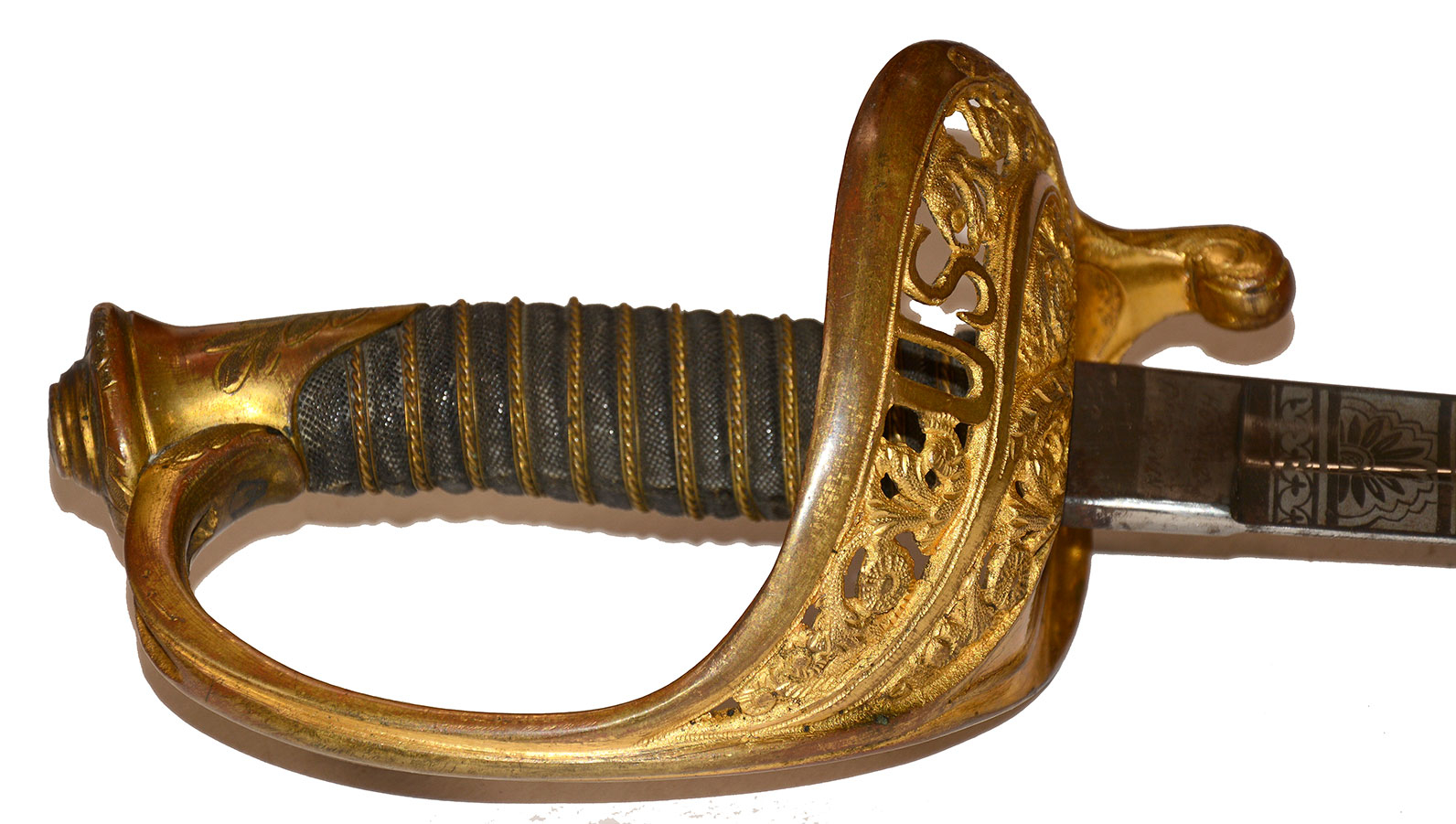
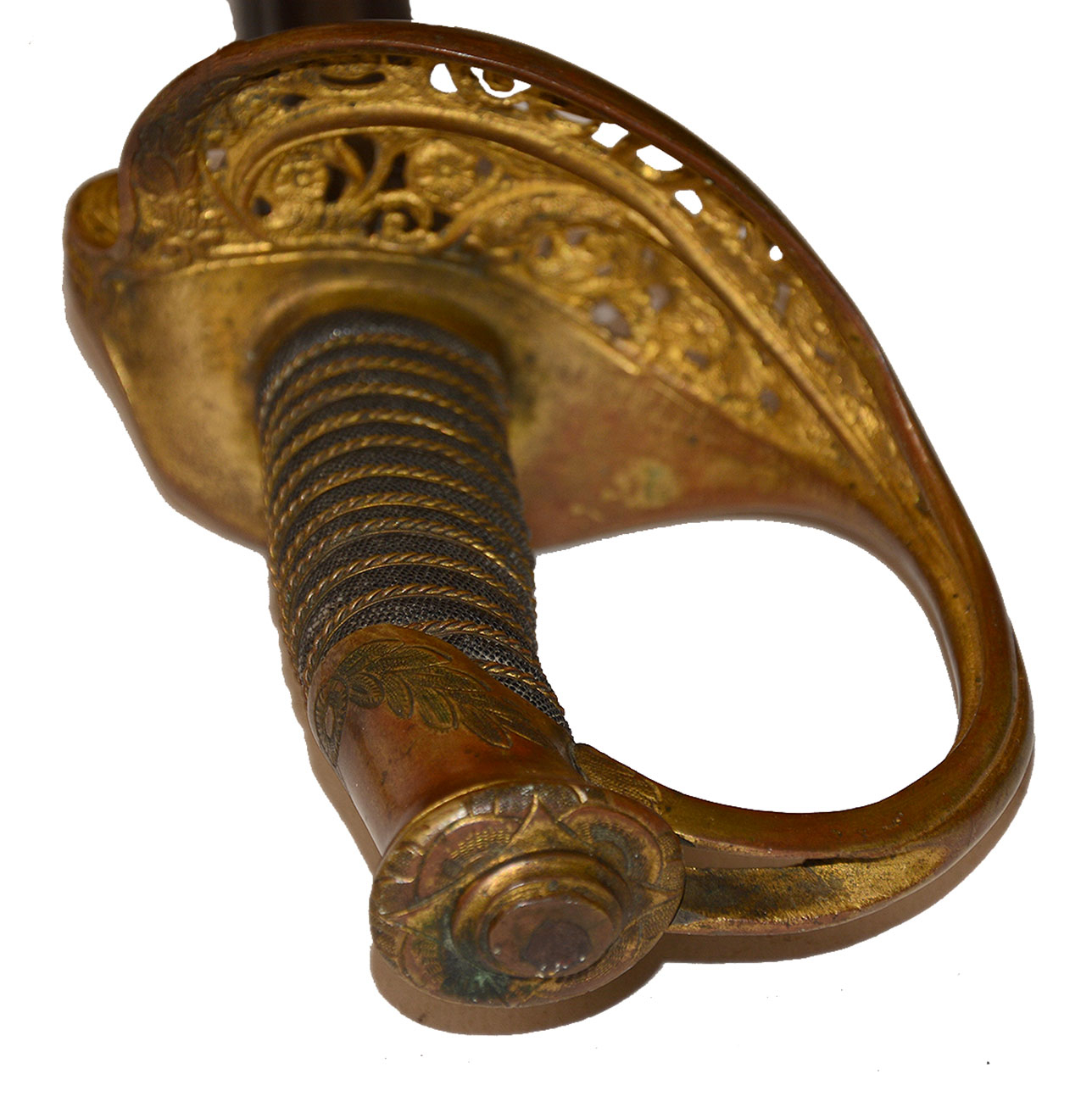
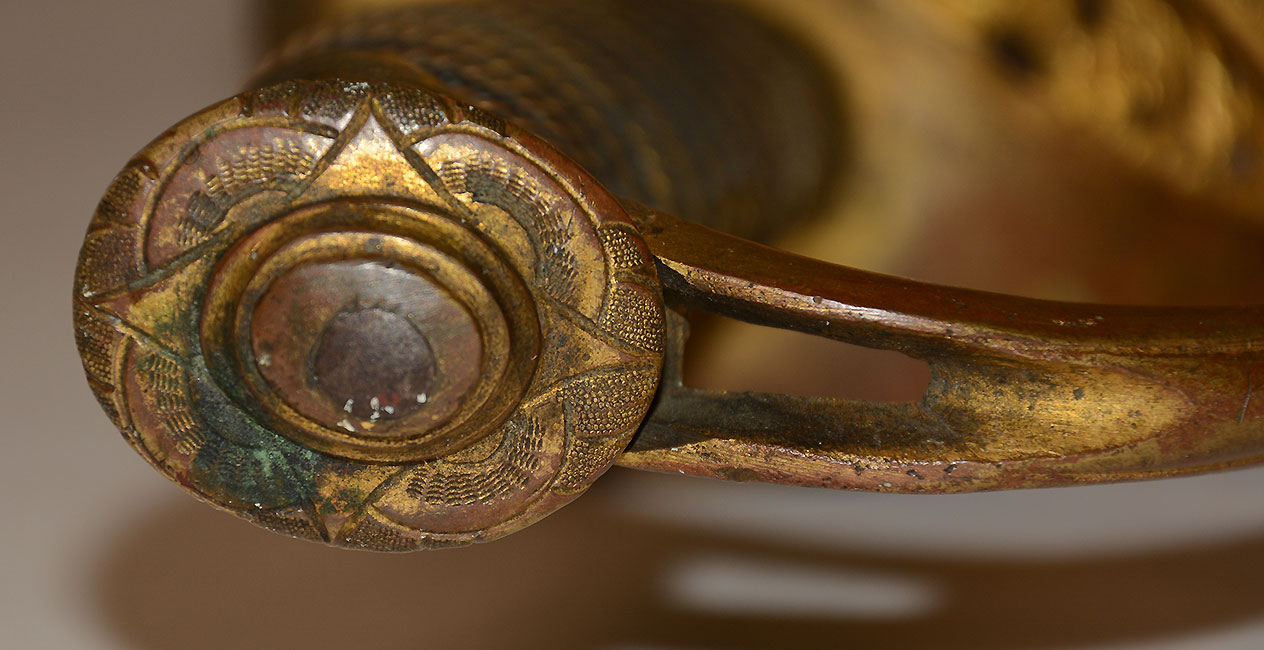
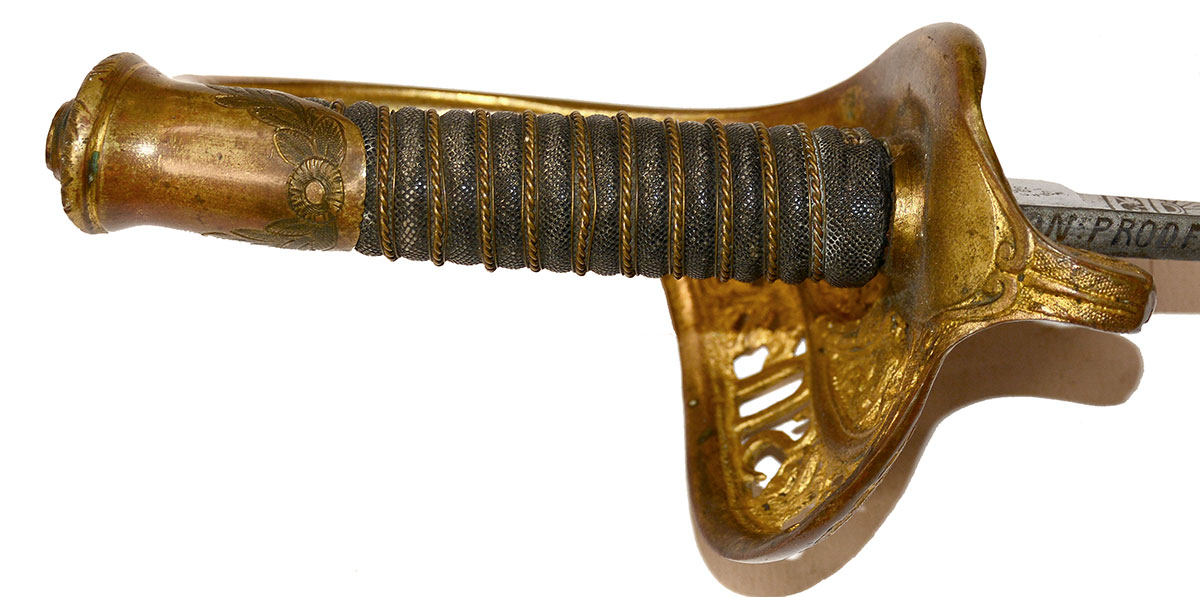

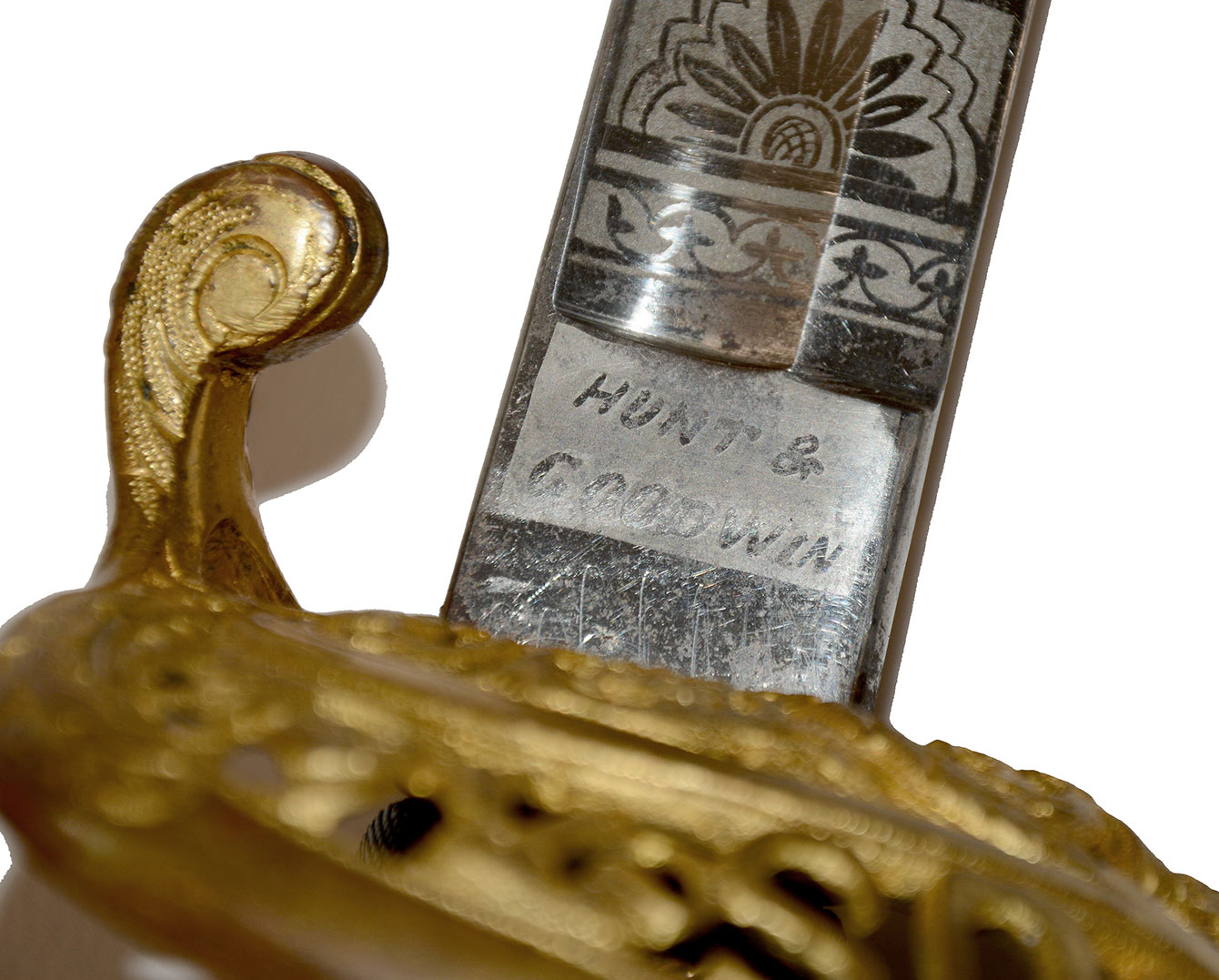
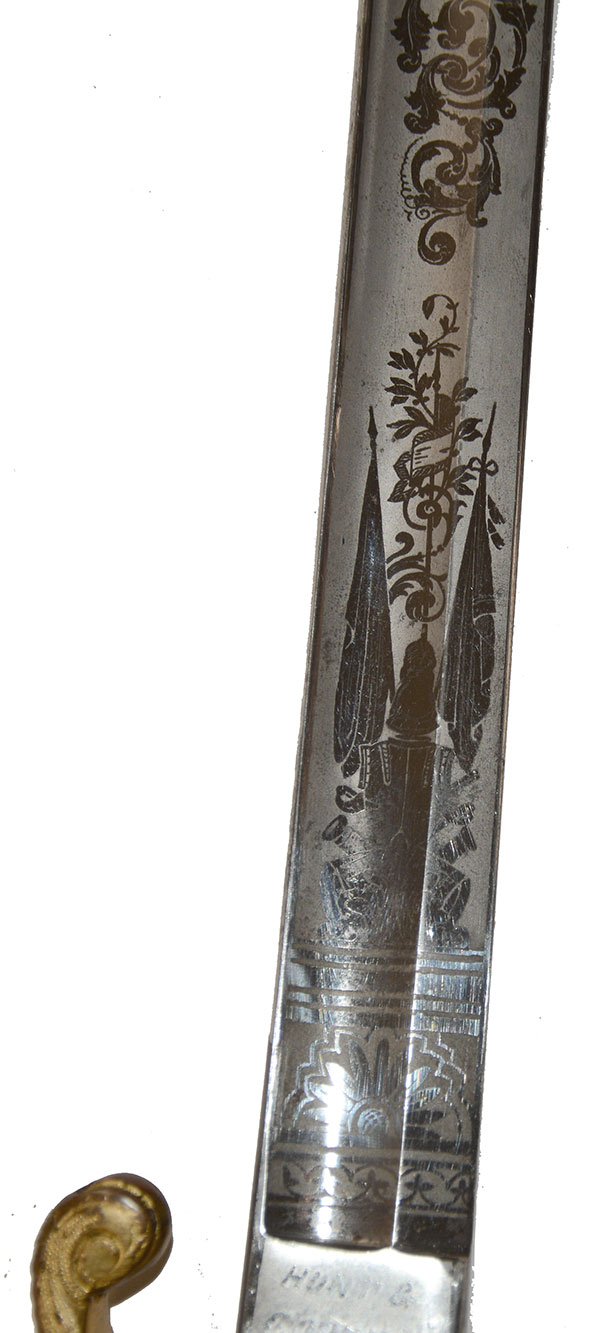
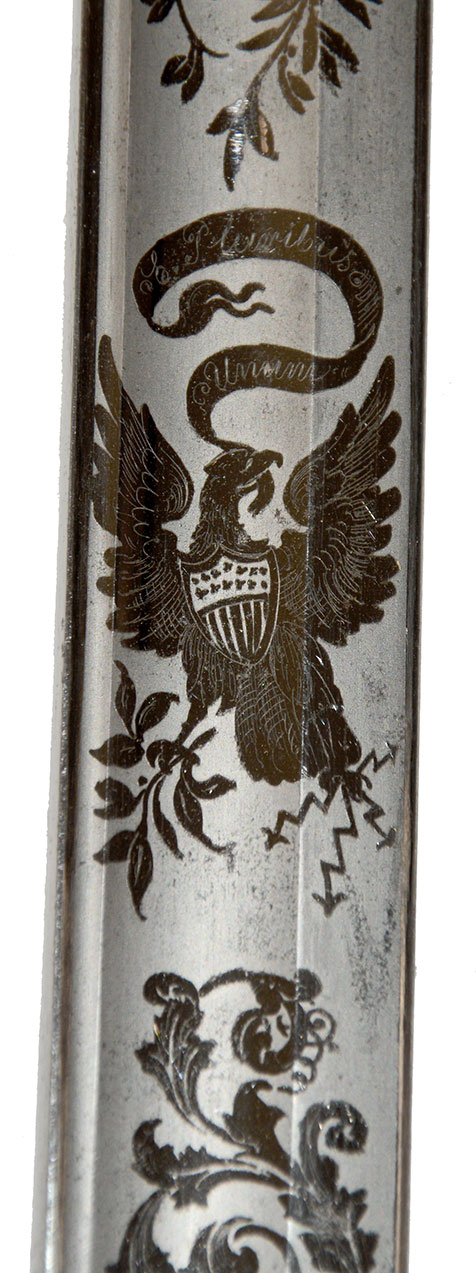

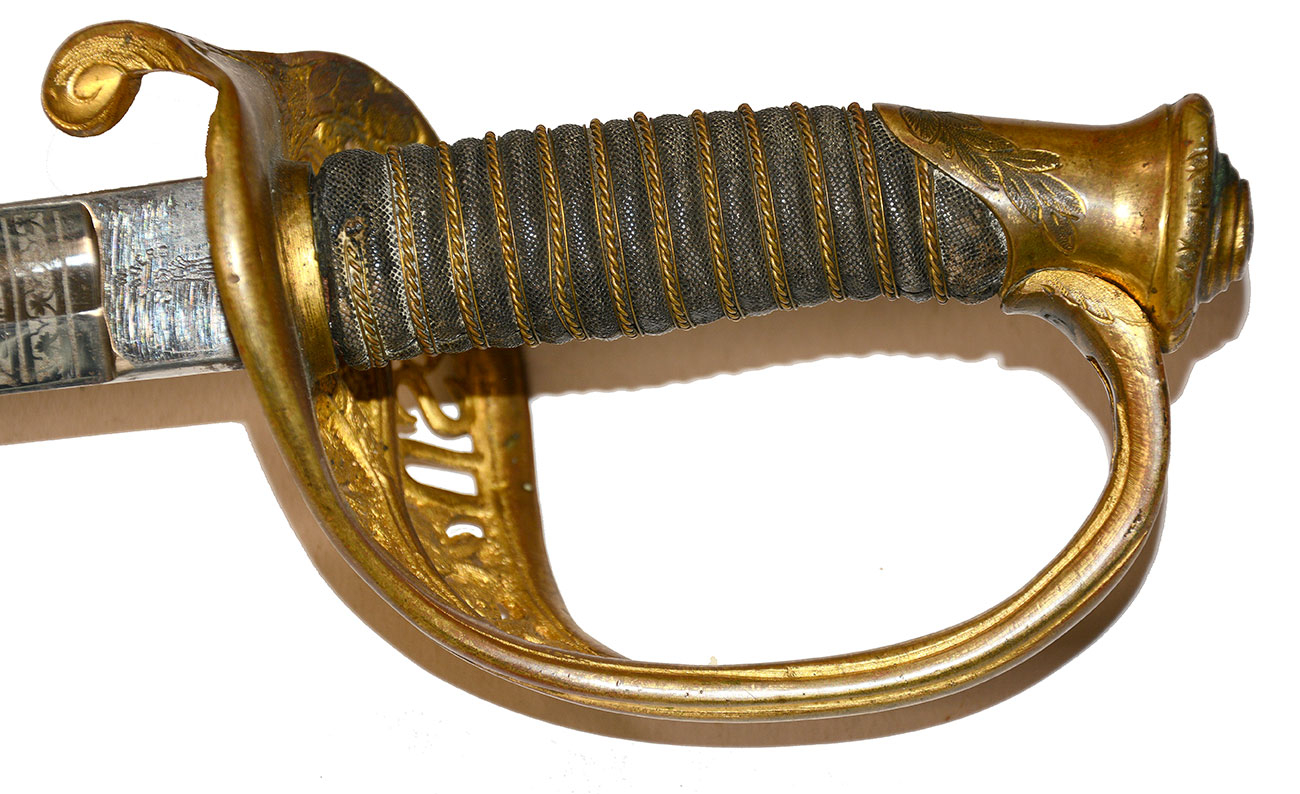
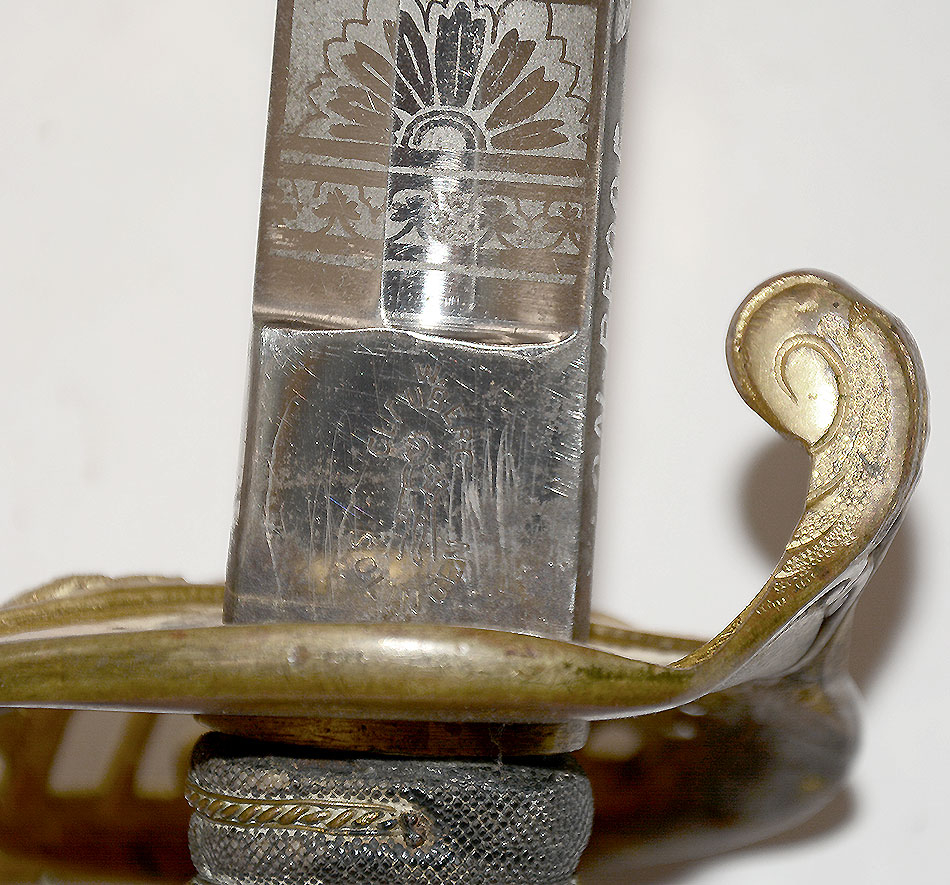
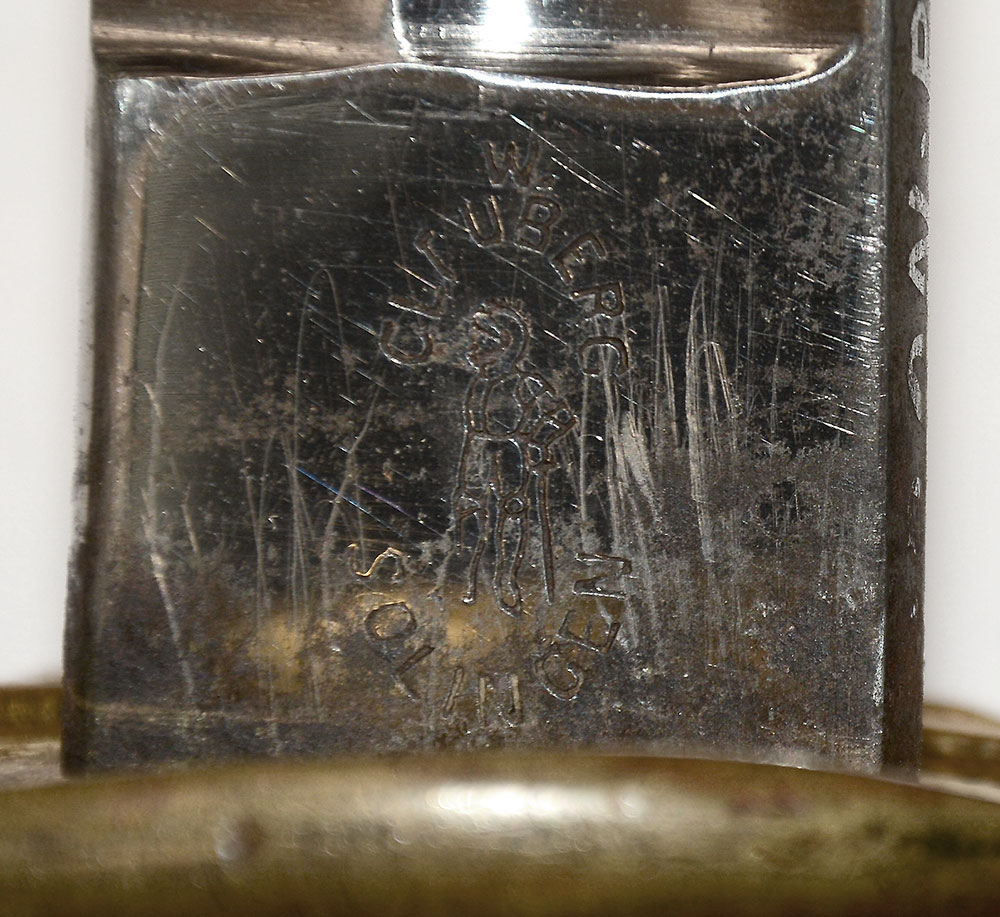
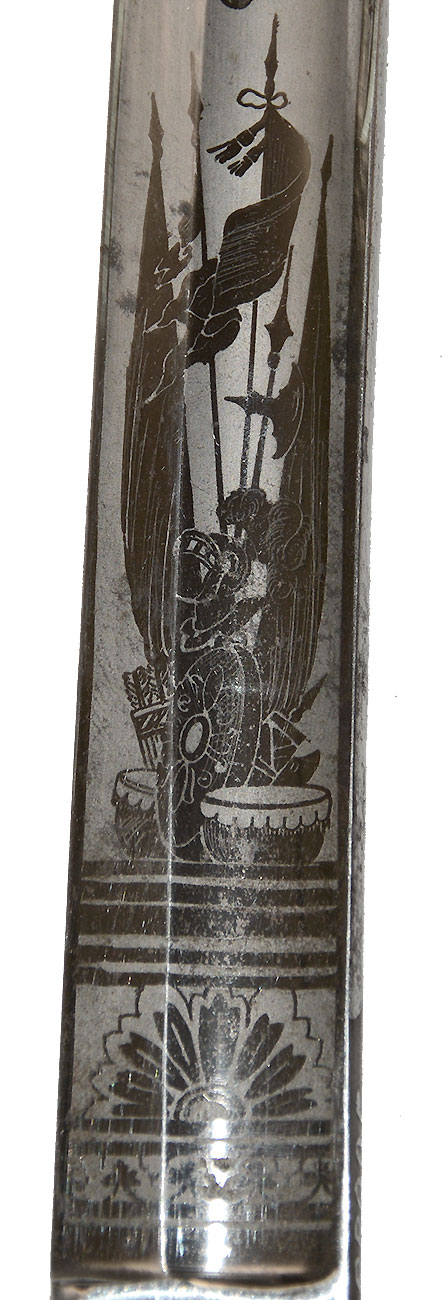
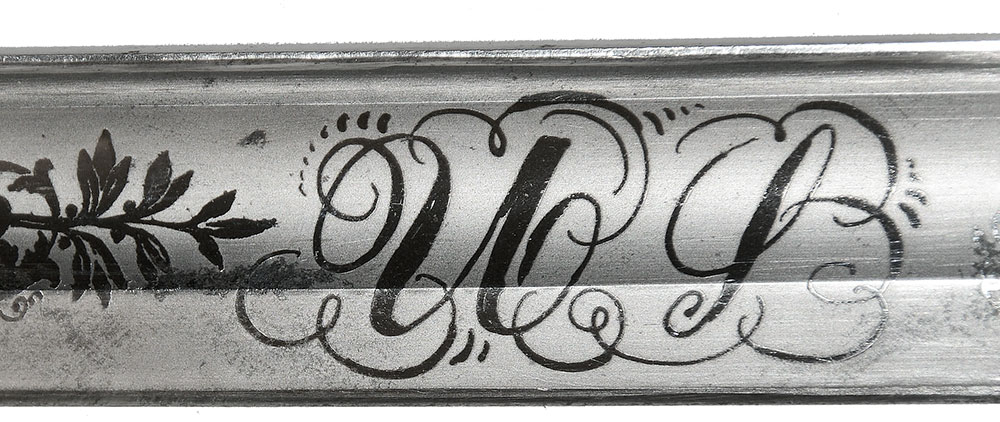
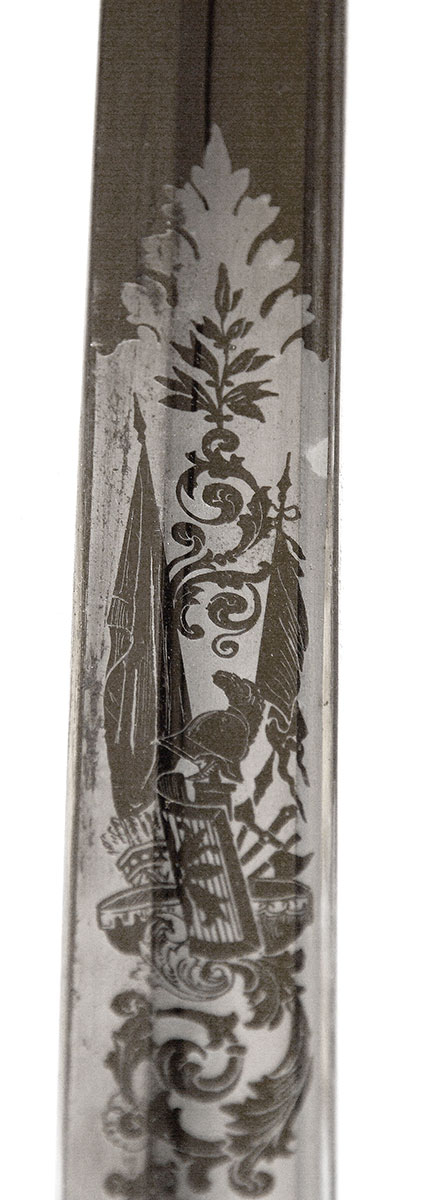
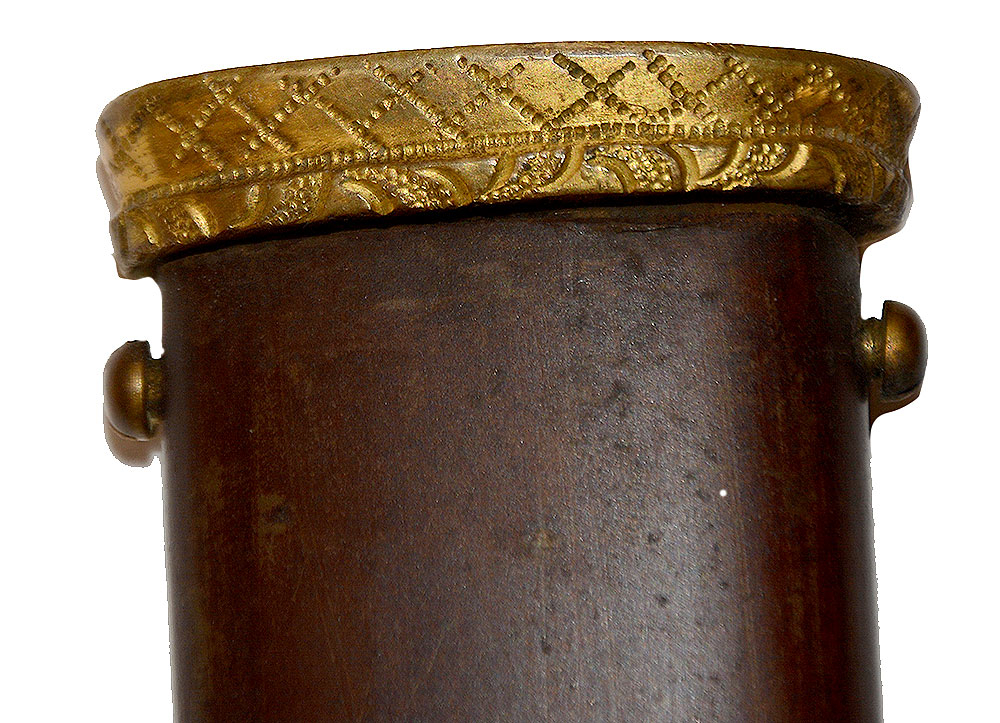
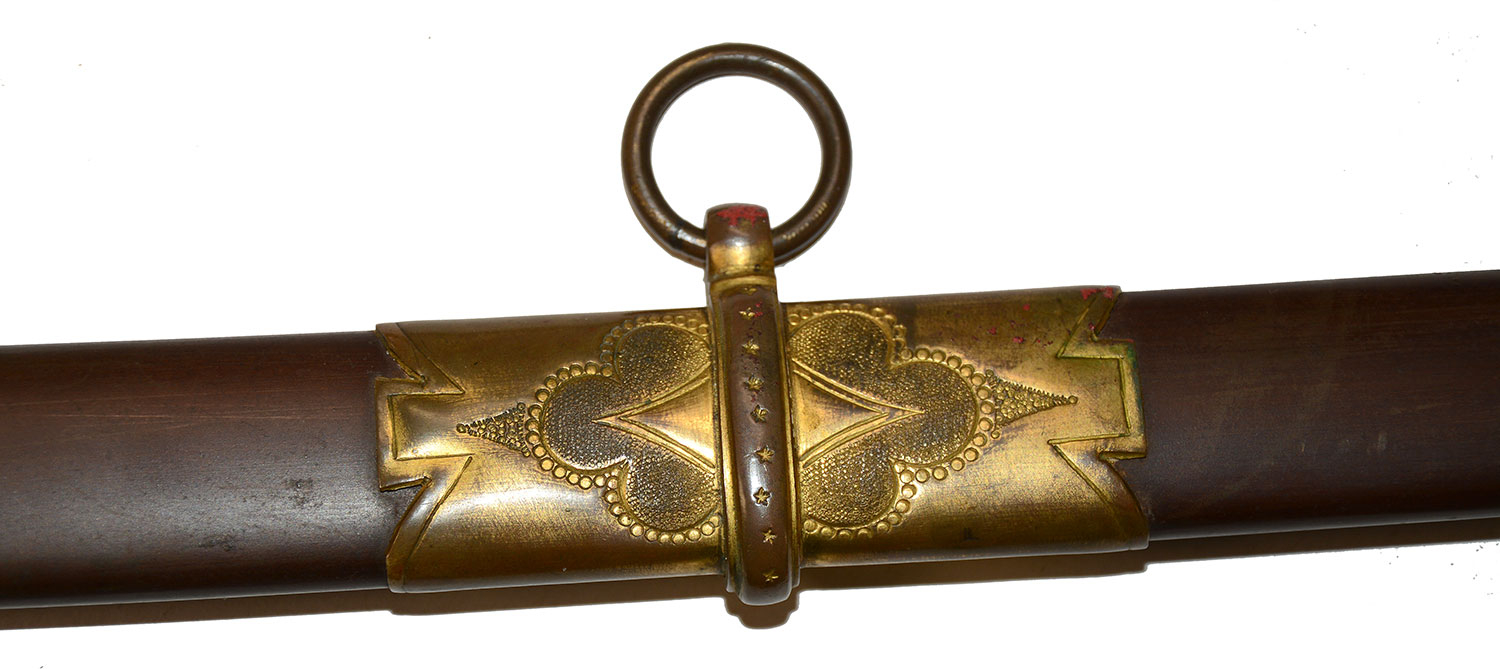



$3,750.00 SOLD
Quantity Available: None
Item Code: 1186-04
This regulation US Model 1850 Staff and Field Officer’s Sword is in superb condition and bears a great inscription on the upper ring mount reading: Presented to / Lt. Chas. Tucker / 1st Cal. Regt. / by his Friends / Washington / June 19th / 1863. The 1st California, also known as “Baker’s California Regiment,” initially recruited under direct U.S. sponsorship, was taken up by Pennsylvania in 1862 as the 71st Pennsylvania. Tucker had prior service in the District of Columbia Militia, defending Washington at outbreak of hostilities, and later service in the Invalid Corps / Veteran Reserve Corps after being severely wounded in action at Antietam.
The blade is bright, with vivid etching of military, patriotic, and floral designs set off by the silvery frosted ground. The obverse ricasso is etched by the retailer, “HUNT & / GOODWIN,” who sold military goods on Pennsylvania Avenue in Washington 1861-1865, and had business interests in New York and Boston as well. Above that is crisply a rendered rosette with a trophy of arms above, consisting of a cuirass and helmet, with drums, cannon and sword just below it and crossed banners angled to the sides above, with a lance with small pennant entwined by a leafy tendril rising in the middle. Above are floral scrolls, followed by the central motif: a dynamic American eagle holding lightning bolt arrows and olive branch, with a US shield on its chest, flourishing a scrolling banderole with “E Pluribus Unum” dry needle etched in it. The lower motifs then repeat in reverse order, with floral scrolls, followed by a trophy of arms with drums, swords, flags, and central banner on a vine entwined pole. The frosted panel ends in a leafy outline. The reverse employs similar, but not identical floral and martial motifs, uses a very nicely rendered script “US” in the central position, and trophies of arms with even more flags, helmets, shields, halberds, drums, a quiver of arrows, etc. The motifs are equally vivid. The ricasso bears the stamped blade maker’s mark of W. / CLAUBERG in an arc at top, SOLINGEN at bottom and the company’s trademark standing knight in the middle. The back edge of the blade is etched as well, showing IRON PROOF on a frosted ground for a few inches from the guard. The only fault we see is some light scratching on the Clauberg logo.
The hilt rates very good, with full gray sharkskin grip wrap and triple wire binding in place. The brass retains 20 percent or so of the original gilt finish, with a muted, aged tone to the rest, and just some slight darkening in the slot for the sword knot and on the pommel cap, which has a small spot of verdigris, a natural point of handling. The openwork guard is cast and chased with the standard floral scrolls and a floating “US” between the upper integral branches. The peening of the blade tang is dark and undisturbed. The blade pad is missing, but the underside of the guard retains lots of gilt finish.
The scabbard is equally nice, with matching, engraved brass mounts showing some original gilt finish mixing with age-toned brass, again, natural from handling. The scabbard body has a pleasing plum finish showing only a few minor rubs. A narrow throat with punch-dot decoration of small X’s and waves is secured by two screws. The ring mounts and drag have matching geometric upper and lower edges with plain reverses. All three are engraved. The drag has an eagle with raised wings and an arc of stars overhead at the top, with a slanted United States shield among some geometric and floral motifs below and small circles at the bottom. The middle mount uses a ring band punch decorated with stars and matching chevrons at the base of a trefoil with dot edge pointing up and down with. The upper mount uses the same band decoration and below the band a similar chevron, but paired with a leafy trefoil. The upper portion has a large shield with small circles along the edges and with floral supports low on either side. The center of the shield bears the presentation.
Tucker was born in Washington, DC, in 1840. His father appears as a tailor in the 1850 census, as does an older brother. The family was rather large and his father seems to have married more than once. Tucker listed himself as a “stone carver” when he enlisted, first joining for three-months service as a private in Capt. Dagges’ company of DC militia, formally organized on the evening of April 16, 1861, at Temperance Hall on E Street in Washington for emergency defense of the city, and nicknamed the “Constitutional Guards,” though the company may have existed in some form as early as January and been earlier called the “Crittenden Guards.” Tucker was mustered in on April 17 with the rest of the company, which became part of the 5th Battalion District of Columbia Militia, under Lt. Col. C. Everett, on May 3. They were involved in guard duty, reconnaissance, and took part in the occupation of Arlington Heights and Alexandria in late May, and expeditions to Rockville, and to Seneca Creek and Great Falls, where they were involved in a skirmish on June 12.
Tucker officially mustered out from that militia company to date July 17, but had accepted a commission as 2nd Lieutenant in the 1st California Infantry, enlisting and mustering to date July 1. He is listed as present on all muster rolls for that unit until his wounding at Antietam 17 September 1862, a period covering the regiment’s service at Balls Bluff and the Peninsula Campaign, where they saw plenty of action. The regiment was the idea of Oregon Senator Edward Baker with an eye to gaining support and recruits from west coast men residing in the east and was recruited largely in the Philadelphia area, as were two of three others given a California designation, and formed into a brigade under Baker. Instead of a conventional ten companies, the regiment had fifteen, designated A – R, omitting J, O and Q. Tucker’s Company R joined the regiment at Fortress Monroe on July 18. The company, and unusual regimental structure lasted until July 27, 1862, at the end of the Peninsular Campaign when the extra five companies were disbanded and the men incorporated into Companies A-K, with Tucker moving to Company G.
The regiment lost a Captain, killed on picket duty in late September 1861 and several more in a prolonged night-time friendly fire incident at Falls Church shortly after. A month later they were in the thick of the fighting at Balls Bluff, an ill-conceived and poorly executed raid-turned-reconnaissance-in-force across the Potomac that resulted in a defeat, with 223 Union troops killed, including Senator Baker, and a loss to the regiment of 312 out of 520 engaged. A short time later Pennsylvania took over sponsorship of the brigade, and regiment’s title changed to the 71st Pennsylvania, though the old name was often shill used, and the brigade became the “Philadelphia Brigade
In the Peninsula Campaign of 1862 the regiment was lightly engaged at Fair Oaks, but saw heavy fighting in the Seven Days Battles: Allen’s Farm on June 29, losing 96 men, and later that day losing another 68 at Savage Station. On June 30, below White Oak Swamp, they were heavily engaged at Glendale (“Nelson’s Farm,”) when Confederate troops attacked the Federal column as road system forced it to turn west and then again south, and the regiment took part in a bayonet charge to restore Union lines.
The regiment was not engaged at Second Manassas or the battles preliminary to Antietam, but was heavily engaged on the day of battle. Tucker had been promoted to 1st Lieutenant of Company G on September 3, 1862, and was with the regiment as into pushed into the West Woods at Antietam two weeks later. Fielding 510 officers and men, it held the right of Howard’s brigade, itself last in the column of three brigade battle lines into which Sedgwick had deployed his division. The attack and deployment were fatal mistakes: Confederates flanked all three lines on the left and the regiment was caught up in the chaos as regiments tried to change front, fight off the enemy, and cope with fleeing comrades. Only 218 answered the roll call that night. The final toll amounted to almost thirty percent of those on the field: 26 were killed outright; 95 were wounded, of whom 11 would die; 18 were missing- some deserted; others were likely buried as unknown.
Company G suffered 4 killed and 7 wounded, among them Tucker, wounded by a gunshot in the right thigh just above the knee, fracturing his femur. Helped off the field by men of Company F, he was placed in an ambulance with Lt. Col. Warner of the 10th Pennsylvania Reserves, ended up in a hospital in Hagerstown, and was transferred in October to the Academy Hospital in Chambersburg. He was spared amputation, but bone was removed, shortening his leg, eventually requiring a special shoe with four-inch heel and sole to make up the difference.
At Chambersburg insult was added to injury when he was captured and paroled, along with some 280 other sick and wounded soldiers on October 11 by Jeb Stuart with some 1,800 Confederate cavalry and 4 guns, during a raid to gather intelligence and supplies, and destroy a vital railroad bridge near Chambersburg. They reached the town on the evening of October 10, failed to destroy the bridge or seize the assets of the local bank, but gathered up some 1,200 horses in the course of their travels, a quantity of arms and ammunition, cut telegraph lines, did about a quarter-million dollars in damage to railroad property, took some hostages for exchange and eight young black men or boys for servitude, and got back to Virginia, having circled McClellan’s army once again.
Tucker spent two more months in hospital at Chambersburg and another five or so at Washington. Continued service in the field was unlikely, but he managed to get a commission as 1st Lieutenant in the Invalid Corps, perhaps through the influence of the same Washington friends who were well off enough to present him with this wonderful sword. He was offered the commission June 15 and accepted it the same day, though he did not tender his resignation until June 18. In all this, he seems to have jumped the gun somewhat. His resignation was not accepted at the War Department until Aug. 28 in G.O. 386, and did not reach the 71st until September 6 (resulting in a regimental bookkeeping notation that he was “absent without leave” in August.) The sudden delay was likely because he was not officially exchanged as a paroled prisoner of war until included in trades made for prisoners taken by Grant at Vicksburg in July.
None of this interfered with his official assignment to the Invalid Corps on June 25 with a posting to command men of the “3rd Battalion” at the hospital in Trenton, NJ. The 3rd Battalion was to encompass veterans missing a leg or foot, but was soon abandoned for a two battalion distinction of disability. As of July 25, he was assigned to a company designated in turn, 1st Co. 2nd Battalion Invalid Corps; 17th Co. 2nd Bn IC; Co. H 21st Regt. IC; and finally, 17th Company 2nd Battalion Veteran Reserve Corps. From the beginning he both commanded the company and served as Acting Assistant Quartermaster and Acting Assistant Commissary of Subsistence, a staff position that entitled him to ride rather than walk and made a staff and field sword fully appropriate. All of which suggests the arrangement been in the works for some time, perhaps influenced by the same friends who were well enough off to present him with the sword honoring his service in the 71st, but dated exactly to the official date of his joining the Invalid Corps.
Tucker’s career in the Invalid Corps and VRC (the designation officially changed in March 1864) seems to have been spent entirely in New Jersey, as part of the Department of the East, but he did not just fade away. He lost whatever honor he gained for shedding his blood at Antietam in spectacular fashion by being placed under arrest by a Capt. H.G. Tuthill of the VRC on November 19, 1864, and tried in the general court-martial rooms at the Draft Rendezvous on December 15, charged with inducing three of his men to desert, and of breaking arrest while awaiting trial for a visit to New York. The verdict and sentence was published in General Orders by the Headquarters of the Department of the East in New York on February 6, 1865: not only was he cashiered from the army with loss of all pay and “emoluments” due him, and disqualified from holding any future post under the US government, he was sentenced to two-years hard labor at the penitentiary in Albany.
How much time he spent there, if any, is unclear. In May 1865 President Johnson remitted both the prison term and prohibition from government jobs. How much of this was due to Tucker’s friends and how much to his prior service and severe wound, we will likely never know. Johnson’s intercession certainly helped Tucker in the future. He lived in Philadelphia and Baltimore at points before his death in DC in 1911, married in 1871, and was able to get a job in Customs. He also managed to get a disability pension. It is significant that when he applied for it in 1884, he made sure to note that his ambulance companion at Antietam was by then a Congressman, and he himself was a “US employee,” rather a bit of name-dropping to another U.S. employee. He incidentally fudged the date and circumstances of leaving the VRC, and later omitted his VRC service entirely in applying for a pension increase.
Not all soldiers were heroes and not all who served and sacrificed were untarnished. This is a beautiful sword with an interesting and complicated history.
Accompanied by military & pension records from the National Archives. [sr][ph:L]
~~~~~~~~~~~~~~~~~~~~~~~~~~~~~~~~~~~
THIS ITEM, AS WITH ALL OTHER ITEMS AVAILABLE ON OUR WEB SITE,
MAY BE PURCHASED THROUGH OUR LAYAWAY PROGRAM.
CLICK HERE FOR OUR POLICIES AND TERMS.
THANK YOU!
Inquire About BEAUTIFUL PRESENTATION 1850 STAFF AND FIELD SWORD OF LT. CHARLES E. TUCKER 71st PA - BAKER’S CALIFORNIA REGIMENT- WOUNDED AT ANTIETAM
Most Popular
Historical Firearms Stolen From The National Civil War Museum In Harrisburg, Pa »
Theft From Gravesite Of Gen. John Reynolds »
Selection Of Unframed Prints By Don Troiani »
Fine Condition Brass Infantry Bugle Insignia »
British Imported, Confederate Used Bayonet »
Scarce New Model 1865 Sharps Still In Percussion Near Factory New »
featured item
CONFEDERATE SOLDIER LETTER—MAJOR SAMUEL S.J. MOORE, STONEWALL BRIGADE / WIA AT KERNSTOWN--SECOND MANASSAS--THE WILDERNESS
Dated “Camp near Centerville November 1 1861.” Addressed to wife Ellen Scollay Moore. 3 pp. In ink on unlined paper, 12.75 x 7.75.” Exhibits fold marks & slight smudging while remaining entirely legible. In protective sleeve. Born June… (846-566). Learn More »


